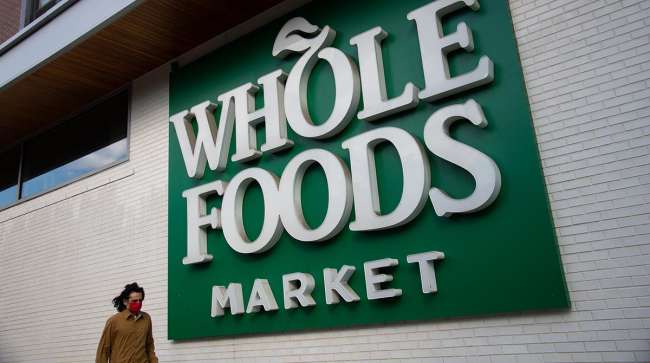(Graeme Sloan/Bloomberg)
Amazon.com Inc. is exerting more control over Whole Foods Market, largely ending the independence the grocery chain had retained since being acquired eight years ago.
Under a reorganization announced last week, Whole Foods’ corporate employees are joining Amazon’s programs for pay, benefits and other functions.
Jason Buechel, the Whole Foods CEO who was named Amazon’s grocery chief in January, said in a memo that the prior structure led to duplicative efforts and failed to make the most of employees. Business Insider reported on the memo earlier.
The latest shake-up continues a process begun a couple of years ago, when the company sought to consolidate and streamline its grocery operations. Besides Whole Foods, the division includes Amazon Fresh supermarkets and Amazon Go convenience stores.
“To make it even easier to collaborate and innovate on behalf of our customers, we’re continuing to unify teams across our grocery brands,” Lauren Snyder, an Amazon spokesperson, said in an emailed statement. “These changes reflect our long-term commitment to making grocery shopping easier, faster and more affordable for customers.”
READ MORE: UNFI Hack Leaves Some Whole Foods Shelves Bare
Amazon.com Inc. ranks No. 1 on the TT Top 100 list of the largest logistics carriers in North America, No. 12 on the TT100 list of the largest private carriers and No. 1 on the Top 50 Global Freight list.
Amazon bought Whole Foods, the Austin-based grocer credited with popularizing organic products, in 2017. For years, the chain retained much of the day-to-day control of its own operations. Staff working on grocery initiatives at Amazon Fresh, which is both a home delivery and physical store brand, might have only limited contact with their peers with the same expertise at Whole Foods.
That started to change under Amazon’s previous grocery czar, who named single executives to run centralized functions like real estate and marketing and tried to consolidate Amazon’s fractured online ordering process.
Whole Foods, with more than 535 stores in the U.S., accounts for most of Amazon’s footprint in physical groceries, a category that has been relatively resistant to e-commerce. Amazon has opened more than 60 Fresh stores, an effort to build out a mainstream grocer. To attract more shoppers, Fresh has been emphasizing selection and making the stores more inviting, while downplaying technological flourishes like cashierless shopping.
The latest reorganization won’t end the distinction Amazon makes among its grocery brands, Snyder said. Whole Foods will continue to adhere to quality and ingredient standards that Amazon Fresh stores don’t.






